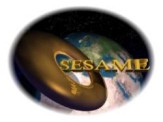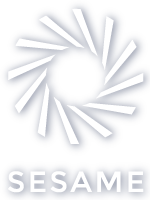Nature 402, 849 (1999) © Macmillan Publishers Ltd.
Heather McCabe

[PARIS] A scheme to build an international research centre in the Middle East using a synchrotron donated by Germany crossed a major hurdle last week. Eleven countries in the region agreed to provide sufficient funds to pay for disman tling the machine, now located in Berlin.
The German government had demanded that the project, overseen by the United Nations Educational, Scientific and Cultural Organization (Unesco), find the money to dismantle Bessy-1, a 0.8-GeV synchrotron radiation source, by the end of the year (see Nature 399, 507-508; 1999). Bessy-1 needs to be moved to make room for the Max Planck Society's new history of science centre, and would otherwise have been scrapped.
During a meeting at Unesco headquarters in Paris last week, 11 countries each pledged US$20,000 towards the project, known as Sesame (Synchrotron Radiation for Experimental Science and Applications in the Middle East). The United States will give anoth er $20,000, and Sweden will donate $5,000. Unesco will provide the rest of the expected $1 million needed to prepare the machine for shipping to a site yet to be decided in the Middle East.
Seven countries are vying to host the machine -- Armenia, Egypt, Iran, Jordan, Oman, the Palestinian Authority and Turkey. Israel is a member of the project, but is not competing to host the light source, as this would place the source off-limits to sc ientists from some neighbouring countries.
The decision about which country will host the machine will be based on criteria such as a central geographical location and openness to scientists of any religion, nationality or sex. Wealthier countries may have an advantage in the bidding, since the new centre must have the financial means for its continued success.
Top candidates are said to include Jordan, the Palestinian Authority and Egypt. In contrast, Armenia, Iran and Oman may be too remote to provide easy access for countries in the area. And a few countries, such as Iran, have not received guarantees from their governments that the centre could guarantee broad access.
The next major hurdle will be to raise around $100 million to build the new facility, to provide running costs for the first couple of years, and to upgrade the machine. An upgrade would include extending the machine's spectral range to 20-25 keV to pr ovide hard X-rays, which are especially useful for protein crystallography and environmental studies.
Most of this sum will probably need to be raised outside the region, perhaps from large sources of funding such as the United States, Europe and perhaps even Japan.
"The money already coming to the region from other countries is very substantial, and we need only a few per cent of this," says Herwig Schopper, former director-general of the European Laboratory for Particle Physics (CERN) and president of the projec t's interim council.
Heather McCabe
 Nature © Macmillan Publishers Ltd 1999 Registered No. 785998 England.
Nature © Macmillan Publishers Ltd 1999 Registered No. 785998 England.

